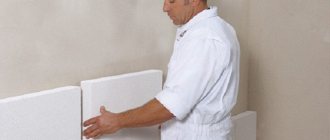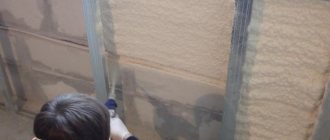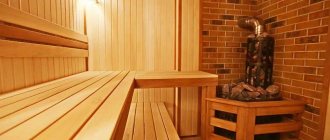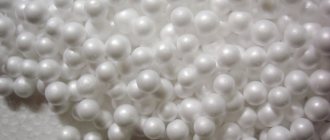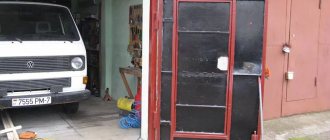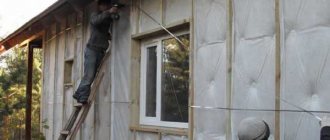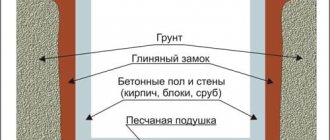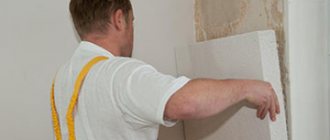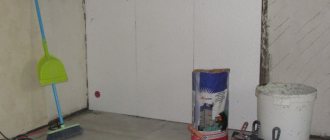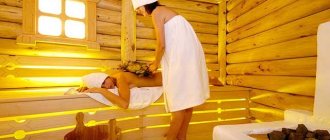10/07/2019 There are many skeptics who claim that insulating a house or apartment from the inside is not the best option. But, in some cases, it is simply not possible to insulate the walls from the outside. Internal thermal insulation is becoming practically the only way that can provide a home with warmth and comfort and reduce energy consumption.
How to insulate a house from the inside, what features of the process need to be taken into account - we tried to cover the topic to the maximum. In the publication you will find the following:
- Features of internal insulation of a house: what is important to know first;
- Preparing the room for internal insulation;
- Insulation of walls from the inside with polystyrene foam; Selection of expanded polystyrene for internal insulation;
- Installation of extruded polystyrene foam for internal insulation;
- How PIR boards are installed for internal insulation;
- Selection of mineral wool for internal insulation;
Basic principles of insulating walls from the inside
Insulating the walls from the inside of the room is an opportunity to save on heating costs and get comfortable living conditions if there are problems with heat in the house.
In private houses, they often resort to external insulation, but it is difficult to insulate apartments from the outside, so this is the best option. Carrying out such work can help get rid of biological effects.
Carrying out such work can help get rid of biological effects.
Video description
Insulation instructions in the following video:
Advice from professionals
When carrying out such work, you need to pay attention to the following points:
- Vapor barrier will help if you make a hermetically sealed joint at the seams.
- The thermal insulation layer should not have a high vapor permeability parameter. In the case where this indicator is higher near the wall than that of the insulating material, steam will escape outside.
- To achieve complete adhesion of polystyrene foam to the wall, the beacon method of applying plaster and the method of leveling the glue with a comb are used. This allows air bubbles to pass between the wall and the insulation.
On a note! To prevent moisture from appearing on the walls, a high-quality ventilation system must be installed in the house - hoods and valves on the windows.
Natural ventilation must be calculated no less carefully than forced ventilation Source sovet-ingenera.com
Advantages and disadvantages of insulating internal walls
Carrying out thermal insulation from the inside of the room has both positive and negative sides. The advantages include:
- saving on heating;
- in hot weather, on the contrary, it will remain cool inside;
- variety of materials;
- ease of installation;
- work can be carried out at any time of the year.
The downsides are:
- Only the walls inside the house remain protected, the outside remains under the negative influence of cold temperatures, which can lead to rapid wear of the surface;
- formation of condensation between the outside and the inside, which will lead to biological formations that cannot be seen;
- thermal insulation will take up part of the area (at least ten centimeters from each wall).
In hot weather, on the contrary, it will remain cool inside.
Preparing the sheathing and installing it
For the sheathing of walls inside a wooden dacha, wooden materials are used. Metal lathing is installed when the wall is covered with moisture-resistant plasterboard.
The installation of sheathing includes a number of preparatory works in the following order:
- apply markings for installation of the sheathing. The width of the sheathing is selected based on the width of the insulation minus 2-5 millimeters . The insulation should stand up against the sheathing;
- preparation of corner posts . Necessary for creating an even wall angle. The height of the beam 50x100 mm should be equal to the height of the room. The smaller beam 50x50 mm is fastened with self-tapping screws to the edge of the larger beam, forming a right angle;
- making corner posts for all corners of the room;
- preparation of vertical boards for sheathing: boards are cut according to the height of the room in quantities corresponding to the pitch, 2 - 5 cm less than the insulation board.
Installation of the sheathing begins from the corners : using self-tapping screws, the corner posts are installed in their places, their vertical position is checked with a level. Next, from the corners to the center, the remaining sheathing boards are attached along the entire perimeter.
The next step is to install strips around the wall openings.
CAREFULLY!
All wooden elements of the sheathing must be treated with solutions against mold, mildew, and moisture.
After installing the lathing, a layer of heat-insulating material is laid.
Installation of sheathing
The main types of thermal insulation materials for insulating walls from the inside
The variety of materials offered on the market makes it possible to carry out insulation, avoiding many possible problems, because you can choose a material that is suitable for a specific situation. Now we will describe the thermal insulation of the wall from the inside, materials that can be used.
The variety of materials offered on the market makes it possible to carry out insulation, avoiding many possible problems.
Penoplex
Penoplex is a durable material, the use of which is acceptable when working inside the house. The advantage is that it is easy to install and weighs little. Repairs can be carried out in several approaches, and the use of material will not be noticeable from the outside, which allows you to avoid applying for permission to change the appearance of the façade of an apartment building.
But it has low vapor permeability, so condensation will form, which will lead to the appearance of harmful biological formations.
Penoplex is a durable material, the use of which is acceptable when working inside the house.
Styrofoam
Unlike penoplex, foam is less dense; they are both sold at a reasonable price. And they are easy to install, often chosen for work in multi-family buildings. But there are a number of disadvantages of this product:
- non-breathable material;
- combustible;
- fragility of the material;
- requires the installation of a ventilation system, which leads to additional costs.
Often chosen for work in apartment buildings.
Penofol
Penofol is available in rolls and is a foil material that reflects light. In addition to insulation, it creates sound, steam, and a waterproofing coating. Installation is simple, environmentally friendly, fireproof, thin. Its thin structure avoids problems with rodent infestation.
Not suitable for insulating walls that are later planned to be finished with plaster or wallpaper. And it requires the use of a special adhesive composition for fastening.
In addition to insulation, it creates sound, steam, and a waterproofing coating.
Penoizol
Penoizol looks like liquid foam, but the characteristics are different. It is resistant to mechanical stress and moisture, does not burn, can close small gaps and cracks, and is environmentally friendly. It allows moisture to pass through well and removes it outside, but it is necessary to create special gaps inside the room.
A special sprayer is required for operation. Coating walls with this product is easy. Often used for frame houses.
Resistant to mechanical stress and moisture, does not burn.
Polyurethane foam
Polyurethane foam can also be sprayed, has good thermal insulation properties, and moisture resistance makes it reliable. But treating it afterwards with plaster solutions is impossible, so it is necessary to build a frame so that material can be screwed onto it to create a smooth wall, for example, plasterboard.
You will also have to purchase a film to create a vapor barrier; it is attached to adjacent walls, floor and ceiling coverings.
Good thermal insulation properties and moisture resistance make it reliable.
Expanded polystyrene
Expanded polystyrene is lightweight, has high vapor permeability, retains heat well, is moisture resistant, and is fireproof. At high temperatures it emits harmful substances, which is dangerous when installed indoors.
At high temperatures it emits harmful substances, which is dangerous when installed indoors.
Mineral wool
Mineral wool is most often used to insulate surfaces. It is durable, non-flammable, has good thermal insulation qualities, and also noise insulation. Cotton wool is also suitable for attics, attics and other rooms of the building.
The disadvantage is the need to install additional covering with sheet products or panels. Which will reduce the area of the room.
It is durable, non-flammable, has good thermal insulation qualities, and also noise insulation.
Wood fiber boards
Using wooden slabs indoors is an excellent option for insulating a house from the inside. You can use fiberboard, plywood, chipboard. Thanks to the application of special products, the materials are resistant to moisture and temperature changes.
Using wooden slabs indoors is an excellent option for insulating a house from the inside.
Foil insulation
They are durable, environmentally friendly, elastic, and easy to install. Presented in different variations, they have self-adhesive insulation, which is very easy to glue. They can safely cover areas where heating appliances are located.
All these properties make them an excellent option for wall finishing for insulation purposes.
They are durable, environmentally friendly, elastic, and easy to install.
Ecowool
The basis of the material is cellulose products. The product is fireproof, environmentally friendly, and most importantly, condensation does not form on it, which is important when insulating internal walls. It can be blown between walls, it gets into small areas and reliably covers the surface.
The product is fireproof, environmentally friendly, and most importantly, condensation does not form on it.
Glass wool
A budget product, but it cannot be used to cover walls; it is used only for floor and ceiling surfaces. The main disadvantage of glass wool is its ability to absorb moisture, due to which the material deteriorates and the thermal insulation becomes worse.
A budget product, but it cannot be used to cover walls; it is used only for floor and ceiling surfaces.
Sawdust
Sawdust is environmentally friendly, durable, and installation can be done with your own hands. The cost is low. Good heat and sound insulation performance. Can be used on any type of surface.
Sawdust is environmentally friendly, durable, and installation can be done with your own hands.
How to insulate a frame house with ecowool
To spray on a vertical surface, a wooden frame is usually built to divide the space into narrow segments - pockets.
A layer of vapor barrier is attached to the wooden studs, and then OSB boards (or drywall). The upper part of the wall remains unsewn; ecowool will be installed through the hole.
To obtain a solid array of ecowool, you need to hire specialists with professional equipment. Only machine spraying ensures seamless adhesion of the material.
If this is not possible, you can do the filling yourself, but the quality of the layer will be worse.
Ecowool spraying
The material is poured into a suitable container. Then, using a drill, they “fluff” it. Now ecowool is poured into pockets in the walls manually. The lower layers will compact well under their own weight. But the closer to the ceiling, the more effort you need to make to compact the layer.
You can achieve better results and save a little money if you find a company that offers the rental of blow-opening machines for ecowool and try to use it yourself.
Criteria for choosing a material for insulating walls from the inside
There are several factors that are taken into account when choosing insulation for interior walls:
- product thickness;
- the weight of the product, because heavy materials can create unnecessary stress on the surface itself;
- installation method, some methods require the purchase of additional tools and materials, which will increase costs;
- what finishing materials can be used on top of the insulation.
Some methods require the purchase of additional tools and materials.
Polyurethane foam
This material has many similarities with polyurethane foam. Polyurethane foam is applied to a pre-prepared wall using special equipment. A lathing made of wooden blocks serves as the basis for the applied material. The top of such walls is sheathed with plasterboard.
With this application, the material completely fills all the irregularities. Installation is very quick, but special equipment is required, so you will have to invite a specialist.
Nuances of insulating different walls from the inside
Different types of surfaces and houses require taking into account their characteristics when choosing insulation materials. Therefore, the nuances of working in different rooms will be discussed.
Panel house
Before you start insulating a wall in an apartment from the inside in a panel house, they find sources of cold, which are most often the places of interpanel connections. The joints between the panels must be covered with insulation. To do this, you need to expand them with a spatula, clean them of dirt, and then spray foaming compounds into them.
The joints between the panels must be covered with insulation.
Brick house
Brickwork “breathes” well, and in terms of choosing insulation for them, it involves selecting a material that has less vapor permeability. Also, the vapor-permeable effect should increase towards the street. For bricks, you can use polymer materials, mineral wool.
For bricks, you can use polymer materials, mineral wool.
Expanded clay walls
When insulating a house built from expanded clay blocks and foam blocks, it is important to create good ventilation, otherwise the formation of condensation cannot be avoided, and the appearance of harmful fungi and mold will affect the health of the residents.
When insulating a house built from expanded clay blocks and foam blocks, it is important to create good ventilation.
Frame house
To insulate a frame house, you can choose mineral wool, glass wool, stone wool, it is convenient to apply them to the walls of the frame. It is also possible to use polystyrene foam, polystyrene foam and other materials. Several insulation materials are used to construct the pie, which are recommended to be alternated and skillfully combined.
Several insulation materials are used to construct the pie, which are recommended to be alternated and skillfully combined.
concrete wall
For concrete and aerated concrete, it is better to choose a material that has low vapor permeability and moisture absorption.
For concrete and aerated concrete, it is better to choose a material that has low vapor permeability.
Corner apartments
Corner apartments especially suffer from wall freezing; condensation forms in the corners. Therefore, it is advisable to insulate them. Before laying insulation material, it is necessary to treat the surface with antifungal agents.
Corner apartments especially suffer from wall freezing; condensation forms in the corners.
Garage
It is necessary for garage insulation to have a number of properties:
- ease;
- low thermal conductivity;
- resistance to sudden changes in temperature;
- moisture resistance;
- fire resistance.
It is necessary that the insulation for the garage • be resistant to sudden changes in temperature.
Bath
For a bathhouse, you need to choose materials that are fireproof, can withstand high temperatures, are environmentally friendly, have low hygroscopicity, and can retain their shape for a long period.
For a bathhouse, you need to choose materials that are fireproof and can withstand high temperatures.
PIR insulation is a modern analogue of extruded polystyrene foam
PIR insulation appeared on the market relatively recently. Therefore, they need to be considered separately. This heat insulator is a three-layer material consisting of an inner layer of polyisocyanurate foam, covered on both sides with aluminum reflective foil.
In fact, PIR (or polyisocyanurate foam) is a special type of polyurethane with a rigid structure, ultra-low thermal conductivity and increased strength parameters. Due to this, it has successfully proven itself as a heater for internal thermal insulation of any premises, from bedrooms to balconies and loggias.
A special property of this insulation is the additional reflection of heat back into the room due to the foil. Thus, the thermal conductivity coefficient decreases to an unprecedented 0.022 W/m*K, water absorption is only 1% (this is when immersed in water for a day). But the main thing is that the vapor permeability of PIR insulation is reduced to zero due to the same foil coating.
For internal insulation, an excellent solution would be to choose materials such as:
- LOGICPIR universal insulation L 1190x590x50 mm. It has the optimal thickness for medium and large rooms, equipped with an L-edge to prevent the formation of cold bridges.
- Insulation LOGICPIR Balcony L 1185x585x30 mm. It is used on the bottom of small unheated balconies. L-edge present.
- Insulation LOGICPIR Balcony L 1190x590x50 mm. Recommended for insulating a heated balcony, as well as a balcony that is part of a living space.
How PIR boards are installed for internal insulation
The aluminum surface of Pir-plates does not allow high-quality fixation of the insulation using the traditional adhesive method. In this case, the technology with plastic mushroom dowels with plastic nails is used.
The very essence of the technology does not differ from the fastening of polystyrene foam described above. After completing the installation of the last slab, the joints are glued. The gaps between the floor and the slab can be filled with polyurethane foam. Next comes finishing. Instead of dowels, you can use wood sheathing. The beam presses the insulation against the wall, after which the cladding is carried out with panels, lining, gypsum board and other materials. An example of installation can be seen in the photo instructions:
Penoplex is an environmentally friendly material for insulation
This heat insulator is a popular modern insulation material that exceeds foam in its qualities. This granular polystyrene mixture has many advantages:
- moisture resistant;
- fireproof;
- environmentally friendly material;
- neutral to chemical influence;
- ideal sound insulator;
- a light weight.
It showed excellent performance under mechanical loads and at low temperatures.
Production of penoplex - solid slabs before further processing
Step-by-step instructions for insulating walls from the inside with your own hands
Step-by-step instructions for installing insulating material include:
- surface cleaning;
- using antiseptics to treat the surface, applying a primer with deep penetration, and plastering the walls;
- sometimes it is necessary to level the surface with moisture-resistant plaster;
- installation of insulation;
- preparing the surface for decorative finishing.
Sometimes it is necessary to level the surface with moisture-resistant plaster.
Tips and tricks for insulating walls from the inside
A few useful tips will help you insulate the walls yourself:
- the wall must be completely dry before installation;
- to avoid condensation, it is better to mount the insulation tightly to the wall;
- it is necessary to create a ventilation system indoors;
- the type of surface should be taken into account;
- Before starting work, you should study the installation instructions provided by the product manufacturer;
- It is better to calculate the amount of material required in advance.
To avoid condensation, it is better to install the insulation tightly to the wall.
There are many insulating materials, the use of which can improve the climatic conditions of your home and save money. It is important to choose the right product so that it is easy to install and does not worsen the condition of the surface.
